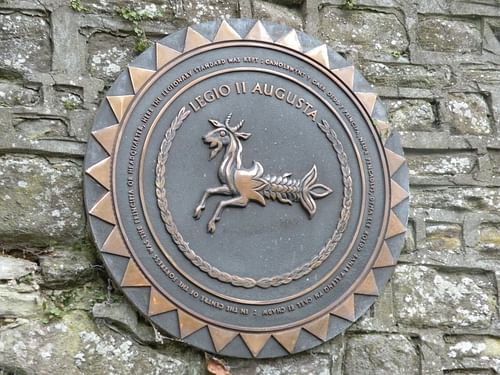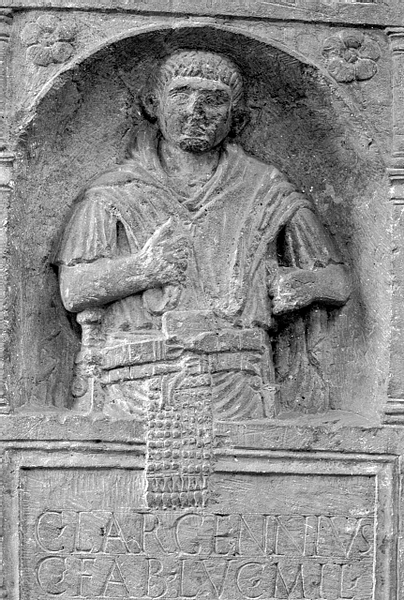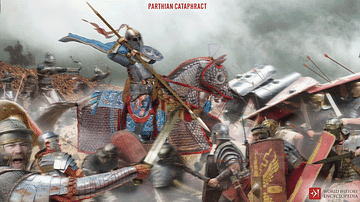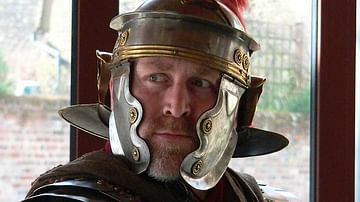
Legio II Augusta was a legion of the Roman army that, throughout its centuries-long history, had fought in the Cantabrian Wars of 29-19 BCE, Germanicus' German campaigns in 9 CE, the invasion of Britain in 43 CE, and Septimus Severus' Scottish campaigns in 208-211 CE. This legion was a true asset to the Roman Empire.
Origin
It is not too clear where this legion had its origins, but it probably took the name 'augusta' from a reorganisation or victory under Augustus. The earliest that we know of the legion for certain is 26 BCE, when it was one of seven or more legions that Augustus led against the Cantabrians, a people of Spain, as part of the Cantabrian Wars of 29-19 BCE. After this, it is unclear where the legion went, or when, other than stay in Spain. According to Pliny, Nat. Hist. 5.20 (a noticeably later source), the colony of Cartenna, in Mauretania (modern-day Tenes, Algeria, which was part of Roman Spain) was founded under Augustus by the second legion.
After the defeat of Publius Quinctilius Varus' legions at the Battle of Teutoburg Forest in 9 CE, the II Augusta moved to Upper Germany near Moguntiacum (modern-day Mainz), and in 15 CE, the legion was part of the army that Germanicus took into Germany to combat the Chatti and Cherusci tribes. On the legion's return to Roman-controlled territory, it was heavily pounded by storms, and drenched by flooding as it travelled along the North Sea coast.
After a while, through the force of the north wind and the equinoctial season, when the sea swells to its highest, his army was driven and tossed hither and thither. The country too was flooded; sea, shore, fields presented one aspect, nor could the treacherous quicksands be distinguished from solid ground or shallows from deep water. Men were swept away by the waves or sucked under by eddies; beasts of burden, baggage, lifeless bodies floated about and blocked their way. The companies were mingled in confusion, now with the breast, now with the head only above water, sometimes losing their footing and parted from their comrades or drowned. The voice of mutual encouragement availed not against the adverse force of the waves. There was nothing to distinguish the brave from the coward, the prudent from the careless, forethought from chance; the same strong power swept everything before it. (Tacitus, Annals, 1.70)
Some point after this the II Augusta moved from Moguntiacum to Argentoratum (modern-day Strasbourg), where various tombstones of its troops have been found. It also seems likely that the II Augusta was involved with putting down a Gaulish rebellion in 21 CE when it must have been under the command of Gaius Silius, the governor of Upper Germany. There is a triumphal arch at Orange which was likely erected to celebrate the II Augusta's role in the defeat of the rebellion; it is decorated with the Capricorn, one of the legion's emblems.
Invasion of Britain
The next move for Legio II Augusta was in 43 CE when under the command of future Roman emperor Vespasian it invaded Britain. The II Augusta moved along the south coast of England fighting many battles with local tribes, and capturing a similar amount of towns. It became one of the legions of Britain, likely first stationed at Isca Dumnoniorum (modern-day Exeter) and then Glevum (modern-day Gloucester). However, the evidence to link the II Augusta in particular directly to these locations is ambiguous; for example, at Isca Dumnoniorum the fortress is seemingly too small to house an entire legion.
Despite being in Britain during the revolt of Boudicca (60-61 CE), the II Augusta was not involved. Tacitus recounts the actions of the camp prefect Poenius Postumus after realising his error in not responding to Suetonius Paulinus' (the governor of Britain at the time) call to arms:
Pœnius Postumus too, camp-prefect of the second legion, when he knew of the success of the men of the fourteenth and twentieth, feeling that he had cheated his legion out of like glory, and had contrary to all military usage disregarded the general's orders, threw himself on his sword (Tacitus, Annals, 14.37)
Year of the Four Emperors
During the Year of the Four Emperors in 69 CE, a vexillation (a Roman legionary task force) of the II Augusta fought first for Otho and then for Vitellius against Vespasian at Bedriacum, but they were defeated. Since it was then clear that Vitellius was ruined, the II Augusta declared their allegiance to Vespasian, who had led them in Britain until 47 CE.
The II Augusta then once again became concerned with Britain. With the south of England having been won over, Rome's concerns now lay with conquering Wales, more specifically, the tribe of Silures. Julius Frontinus, governor of Britain from 74-78 CE, ordered a succession of campaigns against them. It was around then that the fortress at Isca Silurum (modern-day Caerleon) was built. This fortress was occupied by the II Augusta for the next 200 years. The fortress of Caerleon can still be visited today, as well as the surrounding Roman baths and amphitheatre.

Whilst the II Augusta was stationed at Isca Silurum, various detachments would serve missions across the wider area of Roman Britain. For example, part of the legion was present at the Battle of Mons Graupius, under the command of Gnaeus Julius Agricola, although they did not actually participate in any of the fighting. Further detachments could be stationed at Hadrian's Wall or as the governor's staff at Londinium.
Later History
Under Septimius Severus, much of the II Augusta moved to Scotland to partake in a renewed invasion of Scotland in 208 CE, which meant that the number of soldiers stationed at Isca Silurum greatly decreased. After this, not a huge amount is known about the II Augusta, apart from what can be gleaned from inscriptions and dedications.
Possibly the last mention of II Augusta is in the Notitia Dignitatum (a state reference of the positions to be filled by the various ruling bodies of the Roman Empire in Late Antiquity, dated to c. 430 CE), which places the II Augusta at Richborough, Isca Silurum being abandoned by now, under the control of the Count of the Saxon Shore.









